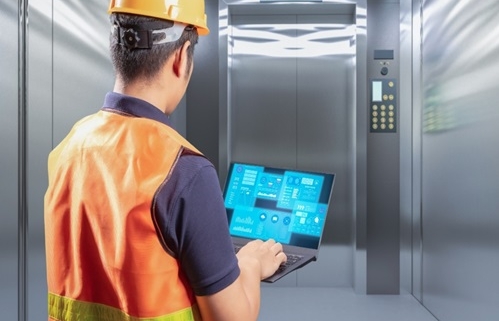The Application of IoT Technology in Elevator Maintenance and Safety Enhancement
The Importance of the Topic
The Internet of Things (IoT) has brought about a major transformation in the elevator industry. By utilizing sensors and smart systems, real-time monitoring of elevator performance has become possible, leading to increased safety, reduced breakdowns, and optimized maintenance processes. This article explores the role of IoT technology in improving elevator servicing, maintenance, and overall safety.
Defining the Topic
Elevators are one of the most critical components of modern buildings, and malfunctions or operational failures can lead to serious issues. Traditional elevator maintenance methods are often based on periodic inspections and reactive measures, which may fail to prevent certain problems. IoT technology provides intelligent solutions, enabling predictive maintenance and proactive management.
IoT Technology and Its Application in Elevators
The Internet of Things (IoT) refers to a network of internet-connected devices that collect and transmit data for analysis. In the elevator industry, IoT sensors are installed on various components to monitor real-time data such as temperature, vibration, energy consumption, and mechanical status.
1. Real-Time Elevator Performance Monitoring
Using IoT systems, multiple aspects of elevator operation can be monitored in real time, and anomalies can be instantly reported. Key monitored parameters include:
-
Cab position and current floor
-
Acceleration and abrupt stops (if excessive)
-
Power status (whether the elevator is operational)
-
Door status (floor and cab doors, safety circuit monitoring)
-
Proper door operation across all floors
-
Motor room temperature
-
Abnormal vibrations, overheating, and unexpected motor speed fluctuations
This data is transmitted to a central platform (e.g., a server), allowing elevator maintenance companies to remotely assess the elevator’s condition.
2. Predictive Maintenance and Failure Prevention
One of IoT’s key advantages is its ability to predict failures before they occur. AI and machine learning algorithms analyze collected data to identify warning patterns, such as:
-
Component wear detection: Vibration and noise analysis helps detect early wear in motor pulleys.
-
Abnormal sound detection: Unusual noises during cab movement are reported along with their location.
-
Door failure prediction: AI monitors door behavior and alerts technicians before malfunctions occur.
-
Automatic alerts: If a failure causes the elevator to stop, the maintenance team receives an immediate notification, including the fault type and required tools.
This approach prevents sudden breakdowns and reduces repair costs.
3. Enhanced Passenger Safety
Since buildings often lack dedicated experts to monitor elevator safety year-round, IoT-based smart monitoring systems serve as invaluable virtual supervisors. Key safety features include:
-
Real-time safety monitoring: The system tracks all safety mechanisms and sends alerts (e.g., to building managers or maintenance teams) if a fault is detected.
-
Incident detection: In case of a malfunction, the system can automatically halt the elevator and notify technicians.
-
Emergency communication: Passengers can use audio/video systems to contact operators during emergencies.
-
Faster crisis response: In power outages or failures, the system reports the cab’s exact location to expedite rescue operations.
4. Reduced Operational Costs
By predicting major failures in advance, IoT monitoring saves time and maintenance costs.
Real-World Examples of IoT in Elevators
Leading elevator companies, such as Otis and Schindler, have adopted IoT:
-
Otis: Uses Otis One to monitor over 2 million elevators globally.
-
Schindler: Implements Schindler Ahead, an IoT-driven platform for predictive maintenance.
Conclusion
IoT technology has revolutionized the elevator industry. By enabling predictive maintenance, improving passenger safety, and cutting servicing costs, IoT is setting new standards for elevator efficiency. Although implementation challenges exist, the benefits are so significant that widespread adoption is inevitable. With advancements in IoT and AI, future elevators will not only be safer but also smarter and more efficient.





Leave a Reply
Want to join the discussion?Feel free to contribute!